Stage 27 – Ponferrada – Villafranca del Bierzo
Total Distance – 23.4 km
Adjusted for Climb – 23.4 km (accrued ascent 0 m = 0 km)
High Point: Villafranca at 550 m (1,805 feet)
CLICK ON THE PICTURES TO ENLARGE TO FULL-SIZE
As Sue an I crossed the Pons Ferrada Bridge we were in a happy and talkative mood. Sue was in her new boots that did not cause her pain and I was thinking of the journey that awaited us. I was very aware that we were heading for the vineyards of the Bierzo region and that always makes me happy! In addition, my Spanish cyclists friends that I had dinner with in Hornillos del Camino had spoken very highly of the beauty of Cacabellos and the surrounding area. They were particularly excited and forthcoming about the quality of the restaurants there. So much so that I circled the town on my map and wrote, “muy bonito, restaurantes buenos” in the margin of the guidebook.
Before entering the Bierzo Wine Country we had to pass by the small towns of Compostilla, Columbrianos and Fuentes Nuevas.
Compostilla (Pop. 1,997) derives its name from the refugio for peregrinos that travelled to Santiago de Compostela and is mainly industrial with a large thermoelectric plant owned by the Spanish company Endesa. In fact, Endesa owns the town of Compostilla! The plant has made local news recently for its’ clean energy efforts. Called El Proyecto Compostilla ( http://www.compostillaproject.eu/ ) it has launched an innovative effort that captures and reduces carbon emissions. Interestingly, nearby you’ll find the National Energy Museum. Neither the plant or the museum are on the Camino to Santiago but you do traverse through the beautiful Plaza de Compostilla. Immediately after going through this plaza you find the Iglesia Santa María de Compostilla in a serene area with tree-lined streets and some chateau-like homes that looked like they might have been a bishop’s residence. I resisted the urge to knock on the door and find out! The church is small and beautiful from the outside. Once past this beautiful tree-lined area we encountered an athletic club facility complete with three tennis courts and a regulation-sized fútbol field. Adjacent to this facility is the Ermita de Santa María.
A little over 2 kilometers to the north-west is the town of Columbrianos (pop. 1,438). This town is actually older than Ponferrada and at one time encompassed an area that included much of modern-day Ponferrada. The earliest documents refer to Columbrianos in 923 and 928 AD and the town was a well-established pilgrim route because of a nearby river crossing on the río Sil, between Santo Tomás and Columbrianos, that had to be taken in order to reach pilgrim Hospital in Columbrianos. That Hospital existed well before the Pons Ferrata was built. There are many explanations as to how the town got its name. One explanation posits that the name is derived from the word CONIMBRIGANOS. This name refers to the city of origin of the people who settled here in the early years of the Reconquista, who were thought to have been Portuguese from the city of COIMBRA. Another theory insists that the name is derived from the word columba (dove or pigeon), due to the abundance of doves and pigeons in the area. The doves and pigeons continue to inhabit the area as is evident by the dovecotes everywhere but I believe that Storks from North Africa have taken over the dovecotes. Lastly, it may be that the name is derived from the Padres Columbinos, who were present along the Camino de Santiago. Which is it? Who knows? But I think it is great fun speculating nonetheless.
The area that we were walking through was evidently very agricultural with many different crops (lettuce, fruits, hay for animals and yes, even small vineyards!) being grown. The Iglesia de San Esteban (1778) was the first thing that we saw as we were emerging from the farmlands before the town. Its location is interesting because it is set apart from the more urban part of town. Not so for the Ermita de San Blas y San Roque. This small chapel has a painting from the XVIII century and a baroque relief painting of la Virgen de La Encina.
Our next destination was to be Fuentes Nuevas (pop. 2,704) and it was on the road to this town that we met an American peregrina that humbled us by her generosity. I’ve already told the story of this miracle that took place outside of the Café Fuentes Nuevas in a previous blog post so if you want to read about it again please search (at the top of this page) for “A Special Gift”. Walking to Fuentes Nuevas the sights began to get more agricultural.
It wasn’t until the time we reached the next town Componaraya (pop. 4,220) that we knew that we were definitely in the Bierzo Wine region for it was here that the vineyards started to make themselves known. Although tempting we did not stop for wine because we were focused on getting to Cacabelos. It was in this region that I met up again with an Argentine woman who I had met in Sahagún. Sue also enjoyed my reaction to “my Spanish Girlfriends”!! These were four women in their 40’s from Madrid who were redheads and I very much noticed them when they asked me to take their picture. Since I have a fondness for redheads I didn’t mind in the least. That may have something to do with me marrying a redhead! The next two days we were to run into them many times and Sue always managed to tease me about them.
As we neared Cacabelos (pop. 4,518) the vineyards became even more beautiful as did some of the homes we saw.
It was clear to me that my Spanish cyclist friends were right on target when they told me of the beauty of Cacabelos and the surrounding area. The town is smack dab in the center of the Bierzo region. Even so and the given the fact that it belongs to the province of León I find it interesting that you can find Gallego spoken here. As Sue and I were walking through the town we came upon the Ermita de San Roque. This ermita is also called the Capilla de San Roque and has been turned into a small museum. Sue and I visited here for a short while before looking for a restaurant in which to have lunch.
How we found the restaurant is an interesting story. I frankly had no idea where to eat on this day and figured that we would walk toward the center of town and find a suitable restaurant. As we were doing this I noticed a small elderly gentleman walking in our direction from about a distance of 40 meters away. He was energetically waving his hands and shaking his head at us. When we finally met up he started telling me that we were going in the wrong direction! I told him that we were looking for a restaurant and I pointed to a building that looked like a restaurant in the distance. Obviously he was trying to be helpful because we were off the Camino route but I thought we had the situation under control. He then told me, “You don’t want to go there. I’ll show you a restaurant where the food is” – at this point he brought his fingers together from his left hand and kissed them while making a smacking noise with his lips. He asked us to follow him all the while repeatedly saying, “The food there is” – and then kissing his fingers again and making that smacking noise. When we got halfway down the Calle de Las Angustías he said that it was as far as he would go and gave us directions to the restaurant that was called Restaurante Casa Gato. We left him there and hoped that his directions were good since he had enthusiastically recommended the place!
Sure enough his directions were perfect. We crossed the bridge and after we had passed the old mill house and went past the church and there on the left-hand sign was a sign for the restaurant – just like he told us there would be!
Restaurante Casa Gato ( http://www.restaurantecasagato.es/es/ , the site has pictures!) was a large restaurant by Camino standards – this was no small café-restaurante! As you entered through the door immediately in front of you was a good-sized bar area. To your left was an elegant dining room that looked like it was set-up for the evening meal and to your right was a french door that led you to a beautiful and very large covered patio- enough for 10 to 15 tables. The patio had a lovely view of a large grass-covered back yard that was bordered by perfectly manicured hedges that were 3 to 4 meters tall. As I sat there with my glass of wine I had to pinch myself because I felt I was in paradise!
The food here is traditional home-style food from the Bierzo region. The restaurant specialities are:
- A Stew of Beef or Veal (stomach meat) with garbanzos – Callos con garbanzos
- Green beans with clams – Alubias con almejas
- Smoked Trout Salad – Salpicón de trucha asalmonada
Although we didn’t have any of these dishes what we did have – and I haven’t the foggiest of what we ate except for an excellent soup – were outstanding. As we looked around it was clear to us that this was a restaurant that catered to locals. We were obviously Peregrinos – the backpacks were a clear giveaway but we were treated with utmost courtesy. While sitting and enjoying our lunch a gentleman was seated at the table next to us. We immediately struck up a conversation and he told me that he was a salesman that sold furniture, wholesale, and that his sales territory was all of northern Spain. He always made a point of stopping – actually going out of his way to stop – at this restaurant because the food was excellent. He was having a gigantic bowl of cherries for dessert and he told me that they were a specialty of the Bierzo. He also told me that they must be eaten cold, in ice-water. If you just picked them off a tree and ate them you would get sick. He then gave us his bowl of cherries! As you can imagine it was pretty hard to beat this lunch as it was hard to summon the will to continue walking – I just wanted to sleep in a hammock (there was none) on that lovely patio!
The old man didn’t fail us in his recommendation and “The food there is” – kissing my fingers and making that smacking noise… But all good things must come to an end and we still had 10 kilometers to go until we reached Villafranca del Bierzo. So we put on our packs and hats, we adjusted our sunglasses and started walking through a country-side that was surrounded by beautiful vineyards.
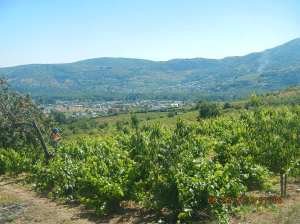 As we reached the base of a large hill that was our last obstacle before reaching Villafranca del Bierzo we saw a Peregrino on the side of the road with a young Spanish teenager that was selling sodas and waters. We stopped and had a cold drink and chatted with them. The teenager was amazed that we had come from California and Australia to walk the Camino! The Peregrino was from Barcelona and had began his pilgrimage from the beautiful Monasterio de Montserrat that was founded in 1025! He had come a long way! After our drink we three decided to walk together up into Villafranca. We were chatting away as we climbed a difficult and steep climb and on our descent disaster almost struck. Before we noticed anything there was a speeding and out of control bicycle being ridden by a teenager that came within inches of hitting Sue! I’m not sure if Sue saw it by I did and I can tell you that if it hit her it would have badly injured her. The bicycle was by us in a second but that didn’t stop our Catalan friend from yelling a stream of Spanish oaths at the wayward teen.
As we reached the base of a large hill that was our last obstacle before reaching Villafranca del Bierzo we saw a Peregrino on the side of the road with a young Spanish teenager that was selling sodas and waters. We stopped and had a cold drink and chatted with them. The teenager was amazed that we had come from California and Australia to walk the Camino! The Peregrino was from Barcelona and had began his pilgrimage from the beautiful Monasterio de Montserrat that was founded in 1025! He had come a long way! After our drink we three decided to walk together up into Villafranca. We were chatting away as we climbed a difficult and steep climb and on our descent disaster almost struck. Before we noticed anything there was a speeding and out of control bicycle being ridden by a teenager that came within inches of hitting Sue! I’m not sure if Sue saw it by I did and I can tell you that if it hit her it would have badly injured her. The bicycle was by us in a second but that didn’t stop our Catalan friend from yelling a stream of Spanish oaths at the wayward teen.
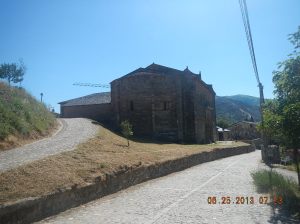
La Iglesia de Santiago – an XI century Romanesque church. It is obviously a fortified church which makes sense given its location. Inside it has a Puerta de Perdón and an excellent statute of Santiago Peregrino. Unfortunately we couldn’t see it. Next time for sure!
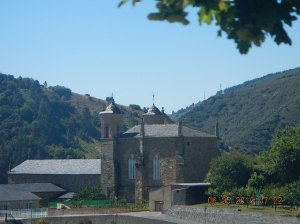
The Monasterio de San Francisco – 13th century. To the left (unpictured) is the XV century Castillo Palacio de Los Marqueses
The Massive Castillo Palacio de los Marqueses
Thank God the rest of the way to the Plaza Mayor and our lodgings was uneventful and we were able that evening to rest, shower, recharge and have dinner in Villafranca de Bierzo.

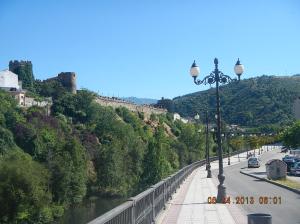
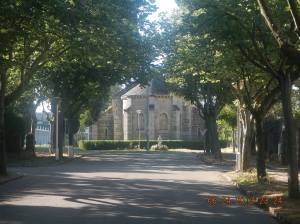
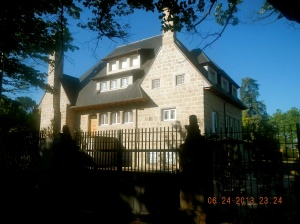
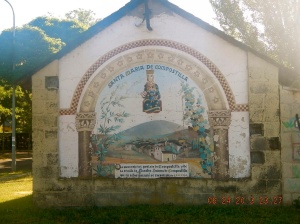
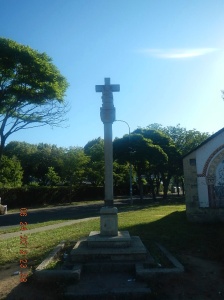
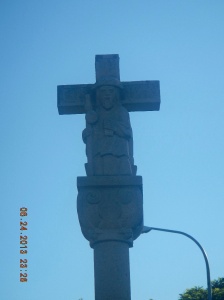
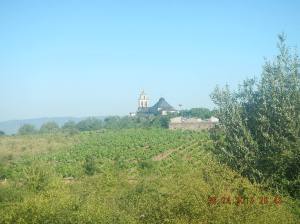
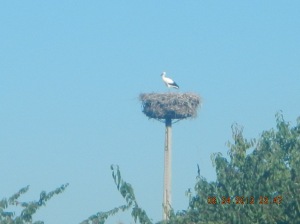
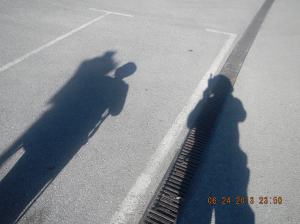
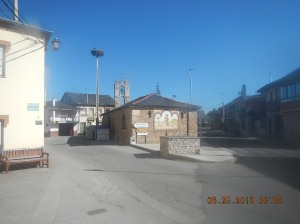

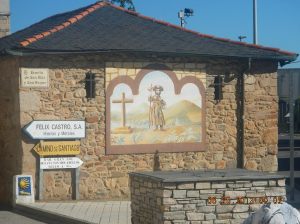
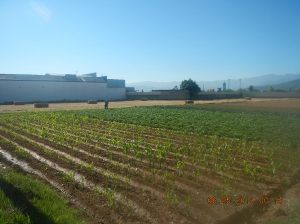
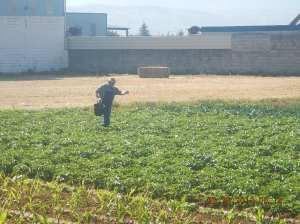
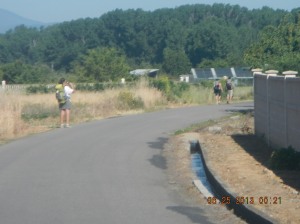
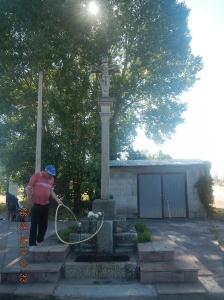

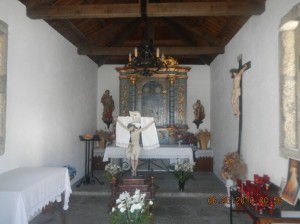
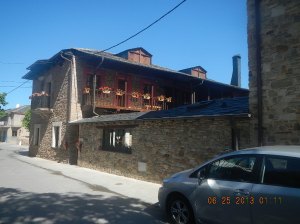
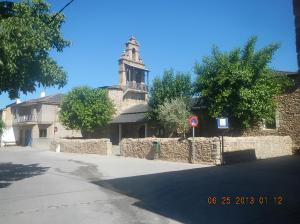
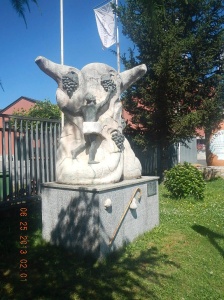
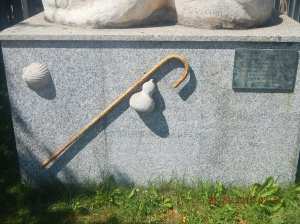
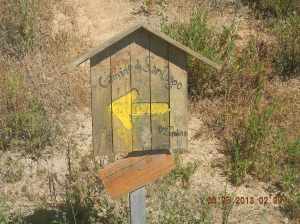
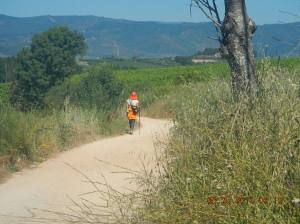
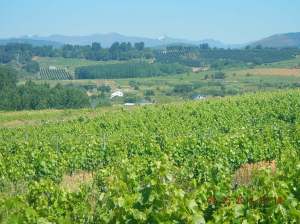

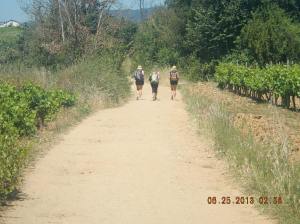
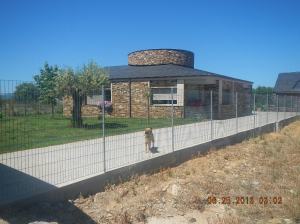
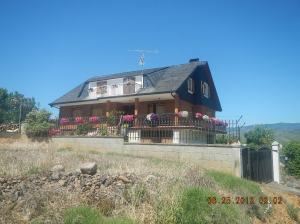
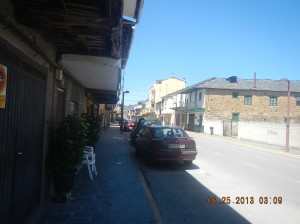

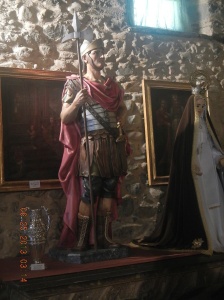
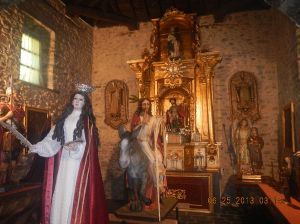
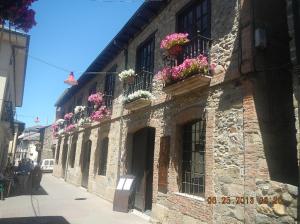
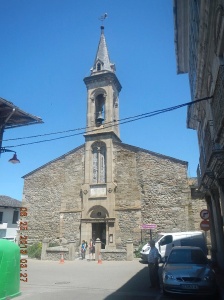
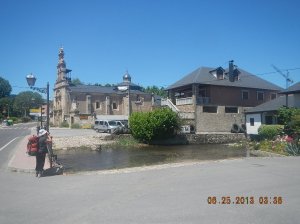
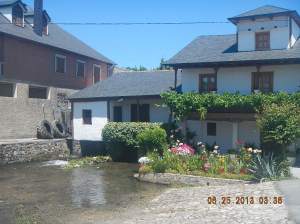
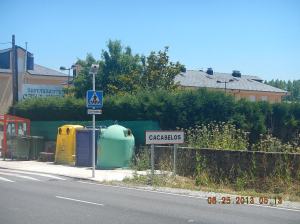
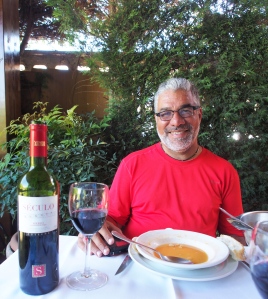
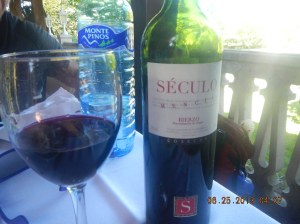

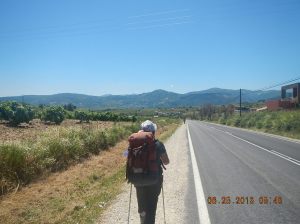

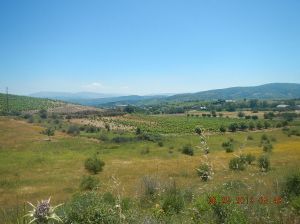
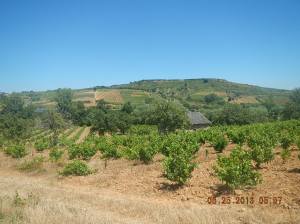

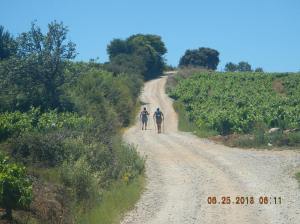
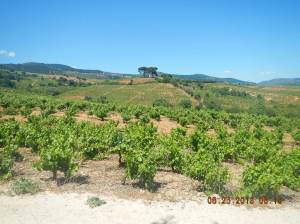

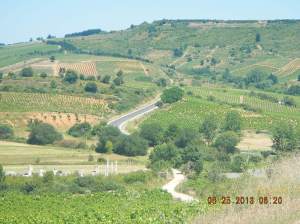
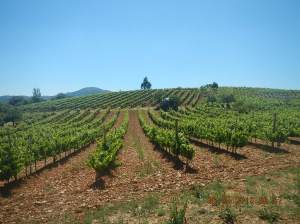
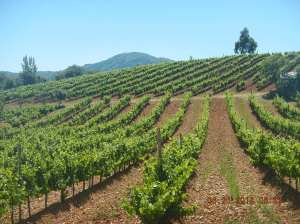

Another vivid description of an eventful day, especially the restaurant and close call with the bike.
Thanks! It’s fun to relive those days.
Michael,
Still nice to read about your walkabout. I hope you are doing well.
I need some advice regarding a friend of mine. Several years ago I befriended a Japanese-American WWII 442nd veteran. a bronze star for valor and purple heart recipient, and of all things a USC graduate. Both Art and his brother are WWII vets and USC grads. Their families and I would like to see them honor in some way, perhaps at football game. Do you know anyone at SC who could make this happen. Art is 91, so, of course, he doesn’t have too much longer. Hopefully, you can help.
Will
Sent from Windows Mail
Will,
I sure can! I’m the Co-Chair for my 30th Reunion at USC in October and as such I can directly contact the USC Alumni Association about this. Can you give me their names and the years they graduated from USC?
Michael
Michael,
I don’t know whether you got my message. Tuesday would be a good day for lunch.
Will
Sent from Windows Mail
I replied on facebook. See you on Tuesday.